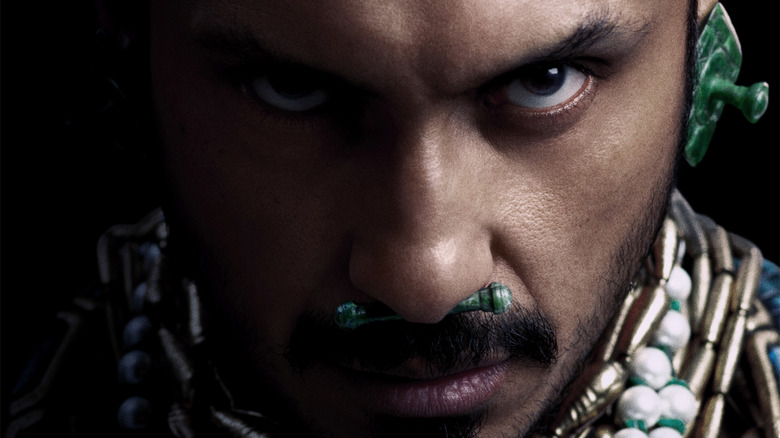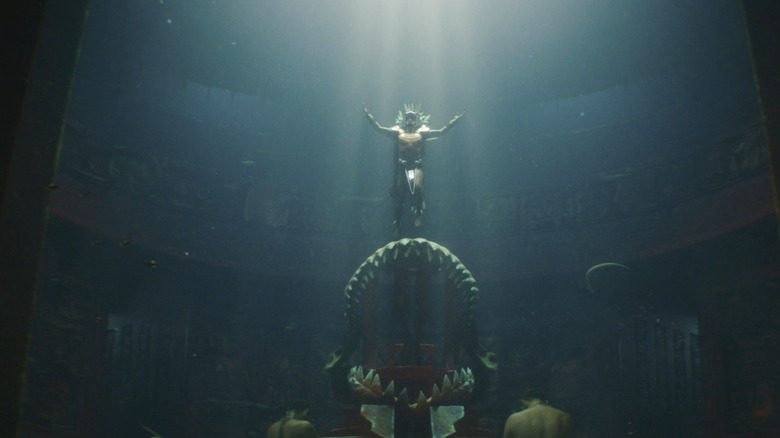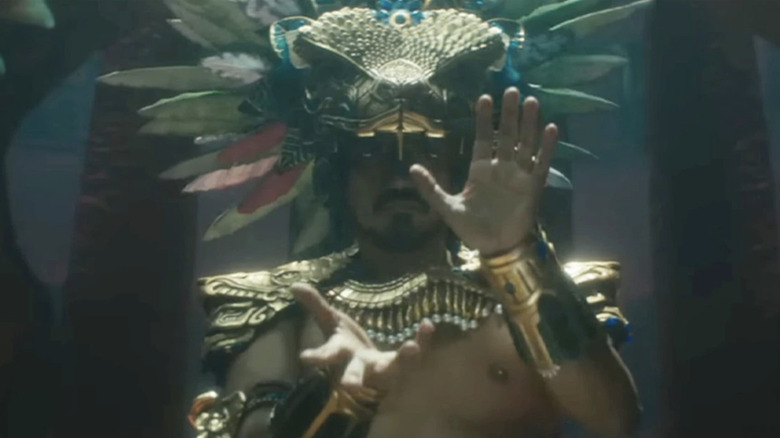Black Panther: Wakanda Forever Used A 'Blue Wall' To Create A Sense Of Unease Around Namor [Exclusive]
When bringing comic book characters to life in movies or TV shows, the environment around them can be just as critical as other aspects of their development, especially for characters like Thor, Aquaman, or Black Panther, whose identities and culture heavily center on the larger-than-life worlds that they come from. Namor is no exception, and when it came time for him to make his Marvel Cinematic Universe debut, writer-director Ryan Coogler and his creative team made sure Namor's debut in "Black Panther: Wakanda Forever" was done right.
The comic version of Atlantis was retooled into the Underwater Nation of Talokan, whose roots in Mesoamerican Culture helped differentiate Namor from Jason Momoa's Aquaman. The depiction of Talokan is not only a huge step forward in Hispanic and Latin representation in the MCU, but is also integral to portraying Namor's motives in the film.
The crew of "Wakanda Forever" put a lot of thought into how the perception of Namor in underwater spaces would both speak to the character's moral ambiguity as well as his aquatic origins. Don't let the emptiness and vastness of some of those underwater scenes fool you; there isn't wasted space in "Wakanda Forever" — at least when it comes to Namor (I can't really speak to some questionable decisions involving agent Everett Ross).
Creating a sense of ambiguity
/Film's Ben Pearson talked with Chris White, Weta's VFX supervisor on "Black Panther: Wakanda Forever," about how he and his team used the idea of a "blue wall" when creating Talokan. The phrase is a diving term and essentially means, in White's words, "that there's so much, what we call 'turbidity,' or so much stuff in the water that things just kind of appear out of nowhere, and it's slightly claustrophobic."
The visual concept of a blue wall would prove exciting to the visual effects team, who were also able to tie it into Namor's story. "I think the old woman says it before they go down, 'Be careful. He lures people into the deep,'" White recalled.
More than that, however, the ambiguous nature of Namor's character in "Wakanda Forever" would complement the vast, murky water that surrounds him in Talokan, mainly when Shuri first visits there:
"There's always this idea that Namor ... you're unsure about him. So that was brought into the whole sequence, that they can't see very far, they don't have much visibility, [Shuri's] in this deep environment. Even down to the designs in his throne room, there's these eels that are always in the background, kind of moving around, and that's just to give you the sense that you're just unsure about this guy."
Aesthetics that match character development
Namor's always been an anti-hero in the comics — an individual with strong convictions that could easily lean toward allying with the heroes of the Marvel Universe as quickly as he could go against them. It's impressive to see the MCU stay true to the character in all the parts that matter— while Namor's origins have changed, the visual effects team worked hand-in-hand with Ryan Coogler to weave the aesthetics of the character and his surroundings with the thematic elements that make Namor so intriguing. The first scene where we are introduced to the people of Talokan works frighteningly well, for example, in part because the sequence uses the vast darkness of the water to bring mystery to the moment.
Now that Marvel Studios has nailed the look and feel of Namor, we can only hope that his next appearance in the MCU will continue to build on the complex and compelling nature of Namor's beliefs, along with some more insight into Talokan.


